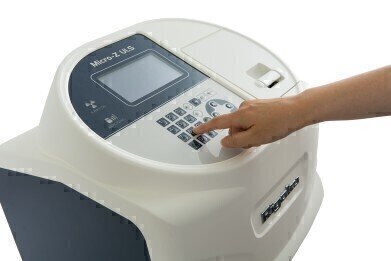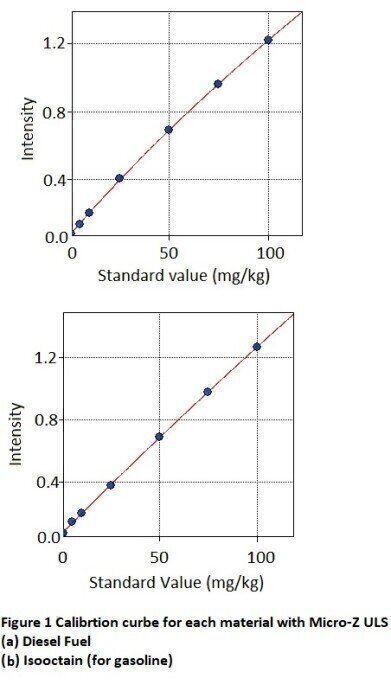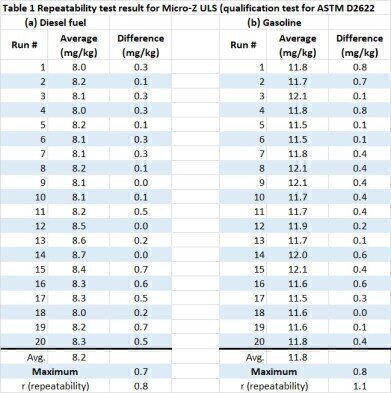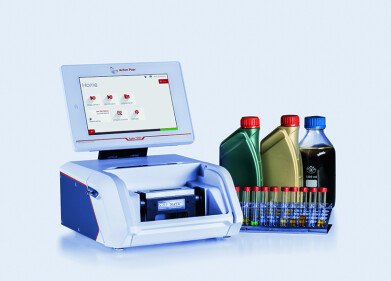-

-
 Figure 1
Figure 1 -
 Table 1 Repeatability test result for Micro-Z ULS
Table 1 Repeatability test result for Micro-Z ULS
Analytical Instrumentation
Analysis of Ultra Low Sulfur in Automotive Fuels According to ASTM D2622-16 by Micro-Z ULS Sulfur Analyser
Nov 20 2018
Introduction
Recent developments in ultra-low sulfur (ULS) fuel have improved fuel efficiency and created cleaner exhaust gases. Globally, the permitted sulfur limit in fuel oils has been decreased to 10 ppm in many regions.
Test method ASTM D2622-16 covers the determination of total sulfur in petroleum and petroleum products that are single-phase and liquid at ambient conditions, liquefiable with moderate heat, or soluble in hydrocarbon solvents. Such materials can include diesel fuel, jet fuel, kerosene, other distillate oils, naphtha, residual oil, lubricating base oil, hydraulic oil, crude oil, unleaded gasoline, gasoline-ethanol blends, and biodiesel.
For compliance verification, X-ray fluorescence (XRF) spectrometry is the preferred analysis tool for use at distribution terminals and refineries, as well as at mobile or stationary testing laboratories. The Rigaku Micro-Z ULS spectrometer is a newly developed sulfur analyser that does not require helium gas during operation, which makes it convenient for analysis sites where the acquisition or delivery of helium is difficult. The method described here demonstrates that the Micro-Z ULS analyser can meet the requirements of ASTM D2622-16.
Instrument
The Micro-Z ULS analyser is a benchtop wavelength dispersive X-ray fluorescence (WDXRF) spectrometer with fixed optics optimised for sulfur analysis. The atmosphere in the optics path of the instrument is a vacuum, which means that helium gas is not required. The spectrometer is designed to minimise the restrictions in installation such as cooling water, special power supply, installation space, etc. The Micro-Z ULS instrument is equipped with an air-cooled 40 W Cr-target X-ray tube and a doubly curved RX-9 analysing crystal optimised for low concentration sulfur.
The Micro-Z ULS analyser has a built-in operation panel, which enables simple and easy operation for daily analysis. The counting time is 300 seconds for peak and background measurements in this experiment.
Sample preparation
Four mL of each sample is poured into a liquid cell (inner diameter 35 mm) with sample film of 2.5 μm Mylar® film (Chemplex® 100).
Standard and calibration
“Number 2 diesel fuel” standards and isooctane-based standards provided by VHG Labs, Inc. are used for calibrations of diesel fuel and gasoline respectively. The calibration curves are shown in Figure 1.
Figure 1 Calibration curve for each material with Micro-Z ULS
(a) Diesel fuel
(b) Isooctane (for gasoline)
Analysis results
Repeatability tests are carried out using a representative sample for each material. For each sample, two aliquots were prepared and analysed; this process was repeated twenty times. The test results are tabulated in Table 1 (a) for diesel fuel and (b) for gasoline, in which the average and the difference of two aliquots are shown respectively. “r” represents “repeatability” defined by the following formula in ASTM D2622-16,
Repeatability (r) = 0.1462·X0.8015 mg/kg (1)
X: total sulfur concentration (mg/kg)
The difference between successive test results obtained by the same operator with the same apparatus under constant operation conditions on identical test material would, in the long run, in the normal and correct operation of the test method, exceed the values calculated by the above equation in only one case in twenty.
The test results shown in Table 1, where the maximum value for each fuel is smaller than r, prove that the performance of the Micro-Z ULS analyser meets the requirement of ASTM D2622-16 for diesel fuel and gasoline.
Table 1 Repeatability test result for Micro-Z ULS
Conclusion
Low concentration sulfur in petroleum-based fuel can be routinely analysed with high precision on the Micro-Z ULS analyser, a benchtop WDXRF spectrometer with fixed optics, which does not require He gas, external water for cooling the X-ray tube or special power supply. This application note demonstrates that the performance of the Micro-Z ULS spectrometer meets the requirement of ASTM D2622-16, which has become strict in recent versions.
Reference
ASTM D2622-16, Standard Test Method for Sulfur in Petroleum Products by Wavelength Dispersive X-ray Fluorescence Spectrometry, ASTM International, (2016), 12pp
For further information about elemental analysis solutions from Rigaku for petroleum and petrochemicals please click here.
Digital Edition
PIN 25.2 Apr/May
April 2024
In this Edition Safety - Carbon monoxide toxic and flammable gas detection Analytical Instrumentation - Density: A fundamental parameter at critical stages within the petroleum sector...
View all digital editions
Events
May 08 2024 Lahore, Pakistan
May 13 2024 New Orleans, LA, USA
May 14 2024 Tashkent, Uzbekistan
May 14 2024 Oklahoma City, OK, USA
May 15 2024 Lund, Sweden

















